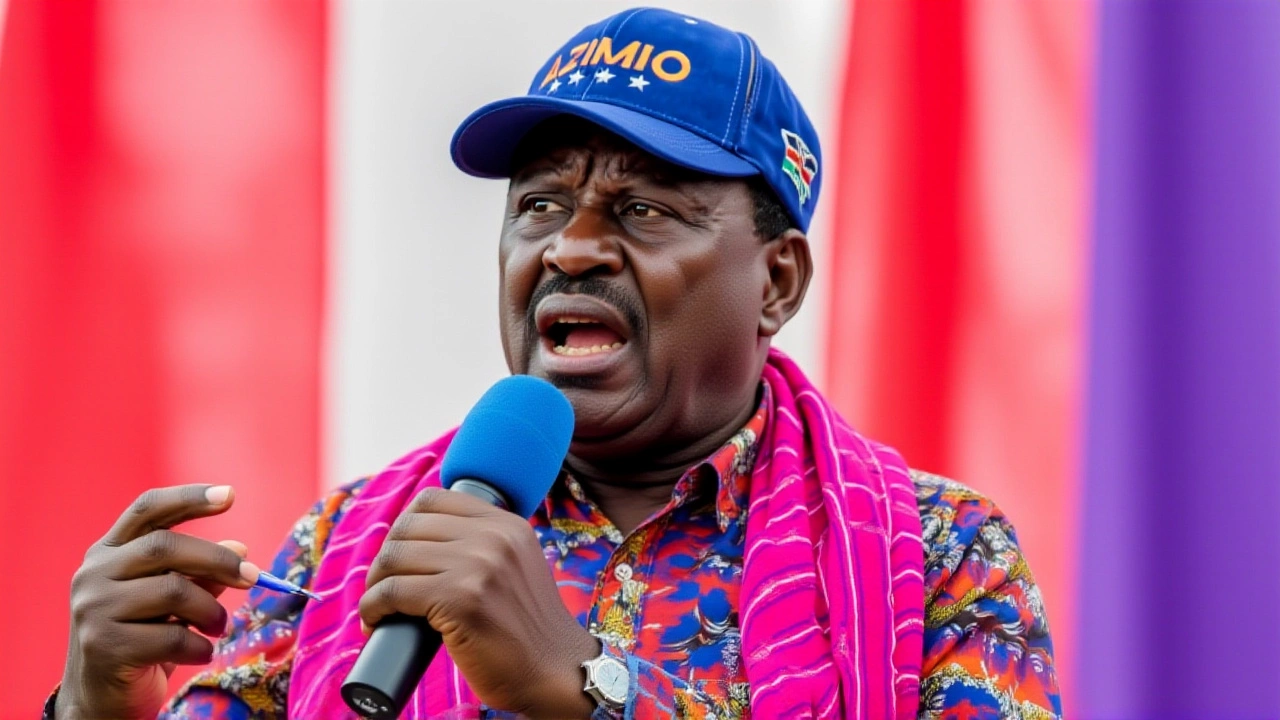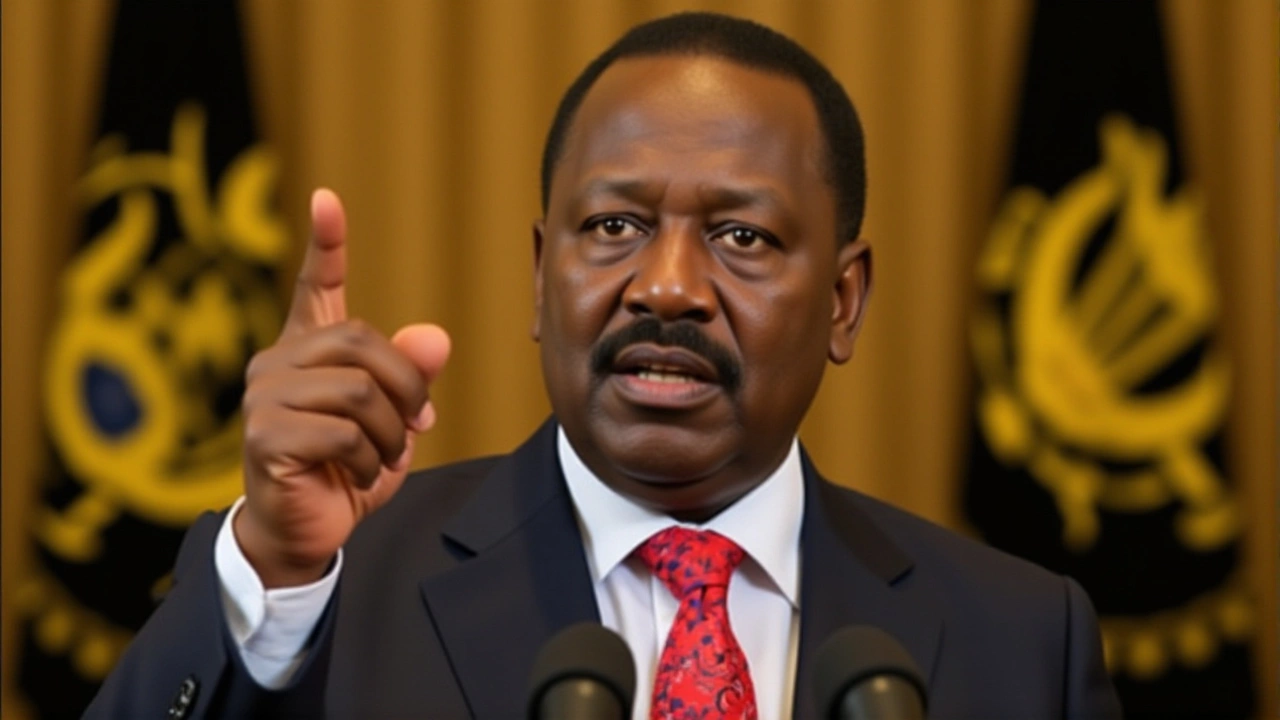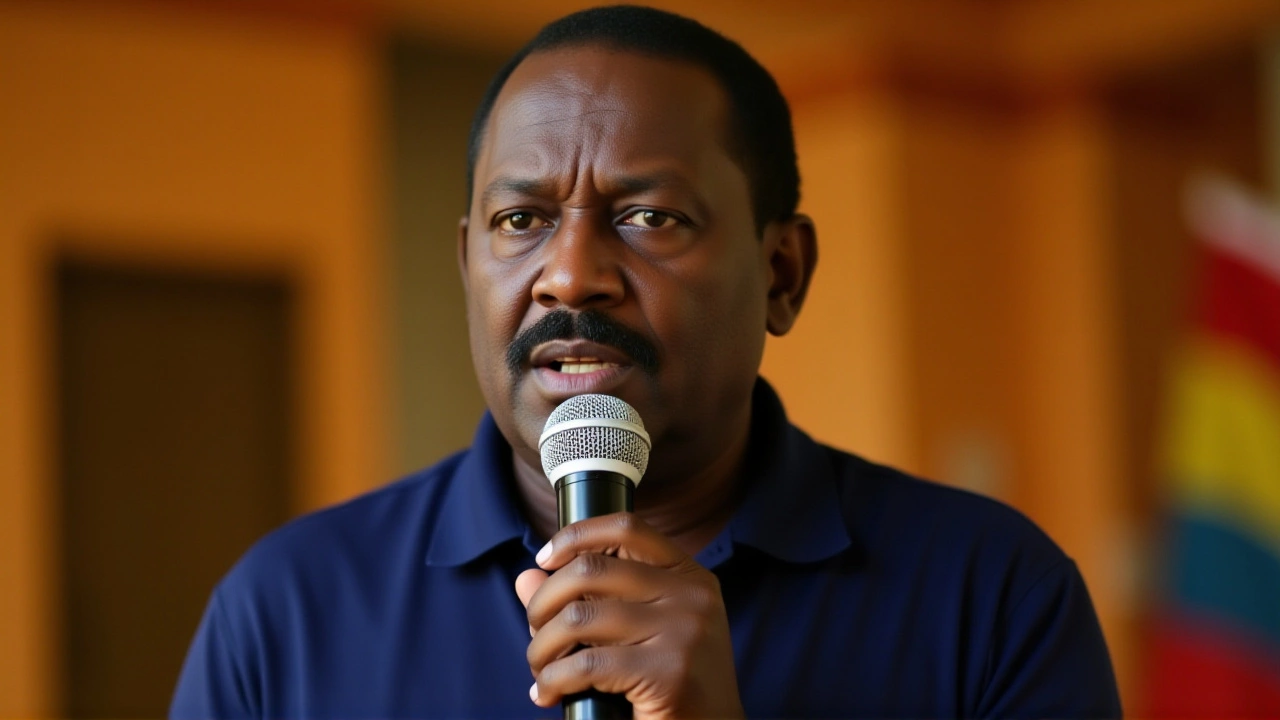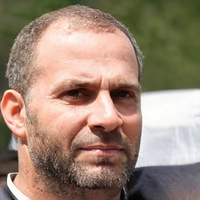When Raila Odinga, former Prime Minister of Kenya suffered a cardiac arrest during a morning walk at Devamatha Hospital in Kerala, India on October 15, 2025, the nation was stunned. The 80‑year‑old opposition veteran had been a fixture in Kenyan politics for four decades, and his sudden death set off a wave of grief that stretched from the streets of Nairobi to the far‑flung villages of Nyanza.
Historical Context: From Student Activist to Opposition Giant
Born in 1945 in the Luo heartland of western Kenya, Odinga first entered the public eye as a student leader at Makerere University. He later joined the Kenya African National Union (KANU) before breaking away to challenge the one‑party dominance of President Daniel Toroitich arap Moi. Imprisoned twice in the 1980s, he emerged as a key architect of Kenya’s 1992 return to multiparty politics, a milestone that reshaped the country’s political architecture.
His role in the 2007‑2008 post‑election crisis cemented his reputation as both a polarising figure and a catalyst for change. The contested December 27, 2007, presidential vote, in which Odinga claimed victory, ignited ethnic violence that left nearly 1,000 dead. The subsequent power‑sharing arrangement, brokered by former UN Secretary‑General Kofi Annan, placed Odinga as the nation’s first Prime Minister under a newly forged constitution.
Recent Political Moves: The 2025 Deal with President William Ruto
In the weeks leading up to his death, Odinga signed a political agreement with President William Samoei Ruto. The pact, announced on August 12, 2025, aimed to quell a wave of youth‑led protests that had claimed hundreds of lives. While supporters hailed the deal as a step toward stability, critics warned it could dilute opposition pressure ahead of the 2027 elections.
Ruto, who declared seven days of national mourning in a televised address on October 15, lauded Odinga as “the father of our democracy” and a “once‑in‑a‑generation leader.” The president’s remarks underscored a rare moment of cross‑party respect, echoing the 2018 “handshake” between Odinga and then‑President Uhuru Muigai Kenyatta that had previously reset Kenya’s political tone.

National Mourning and Funeral Arrangements
Under the president’s decree, a seven‑day national mourning period began immediately, with the national flag flying at half‑mast across government buildings and schools. The mourning period, technically an official period of national mourningKenya, will run through October 21, 2025.
Odinga’s body arrived in Nairobi at 00:54 UTC on October 16, 2025, escorted by a full police honour guard. The government announced that the burial would take place at his family’s ancestral land in Rarieda, Nyanza, following Luo customs that involve a week‑long period of traditional rites and community feasting.
- Death: October 15, 2025, Kerala, India
- Age: 80 years
- National mourning: October 15‑21, 2025
- Burial site: Rarieda, Nyanza Province
- Political affiliation at death: Leader of the National Super Alliance (NASA)
Reactions and Legacy: Voices from Nairobi to the Diaspora
Kenyan citizens streamed onto social media, posting tributes that mixed sorrow with admiration. In Kibera, one resident wrote, “He fought for us when no one else would.” Across the Atlantic, former UN envoy Kofi Annan’s daughter said, “Raila’s courage helped steer Kenya away from the brink of civil war.”
Even political rivals softened their tone. Former President Kenyatta, speaking from Nairobi on October 17, noted that Odinga’s “unyielding demand for a fair constitution” had paved the way for the 2010 charter that introduced devolved county governments and a bill of rights.
Analysts point out that Odinga’s five presidential bids—1997, 2002, 2007, 2013, and 2022—never produced a victory, yet each campaign expanded Kenya’s democratic space. “He was the opposition’s conscience,” says Dr. Miriam Karamia, a political science professor at the University of Nairobi. “His willingness to contest results, even when the odds were stacked, forced the judiciary to become a more independent arbiter.”

What’s Next for Kenyan Politics?
With Odinga gone, the opposition landscape is in flux. NASA, the coalition he once led, announced on October 20 that a “new leadership council” will be formed within two weeks, though names have not yet been disclosed. Some insiders predict that his son, Rep. Oby Odinga, may emerge as a unifying figure, but the elder Odinga’s personal charisma is hard to replicate.
President Ruto, meanwhile, faces the dual challenge of honoring a political adversary while navigating a fragile economy and lingering protest movements. The next general election, slated for 2027, could see a reshaped contest, with parties realigning around emerging regional leaders.
International observers, including the African Union’s election monitor, have stressed that the handling of Odinga’s funeral will be a litmus test for Kenya’s political maturity. “If the transition from grief to peaceful political dialogue is smooth, it will send a positive signal to investors and neighboring states alike,” notes AU election officer Amadou Diallo.
Frequently Asked Questions
How does Odinga’s death affect the opposition’s strategy for the 2027 elections?
Without Odinga’s unifying presence, NASA must quickly reorganise its leadership. Analysts expect a short‑term power vacuum, but the coalition’s infrastructure—regional branches, donor networks, and youth mobilisers—remains intact. The choice of a new figurehead, possibly his son Oby, will shape voter sentiment and could either fragment the opposition or consolidate it around fresh faces.
What were the main reasons behind the 2017 Supreme Court decision that annulled the election?
Chief Justice David Kenani Maraga led a 4‑2 ruling that the Independent Electoral and Boundaries Commission failed to conduct the vote in accordance with constitutional standards, citing irregularities in the electronic transmission of results. The decision marked the first time an African court overturned a presidential election, prompting a repeat vote that Odinga later boycotted over concerns of fairness.
Why was the national mourning period declared for seven days?
Kenyan law allows the president to proclaim a mourning period for figures of “national significance.” The seven‑day span mirrors the mourning accord after former President Jomo Kenyatta’s death in 1978, signalling the state’s recognition of Odinga’s impact on democracy, constitutional reform, and national unity.
What cultural rites will be observed during Odinga’s burial?
As a member of the Luo community, Odinga’s funeral will include a week‑long period of traditional mourning, known as “nyinge,” featuring drumming, communal meals, and the wearing of black cloth. Family elders will lead prayers, and a symbolic “throwing of the spear” ceremony will mark the transition from public life to ancestral rest.
Will Kenya’s foreign relations be impacted by this leadership change?
Odinga was a frequent interlocutor with the U.S., EU, and African Union on governance issues. His absence may shift diplomatic dynamics, but President Ruto’s administration has signaled continuity in foreign policy. The key will be maintaining dialogue on democratic reforms, which many overseas partners view as essential for sustained investment.

